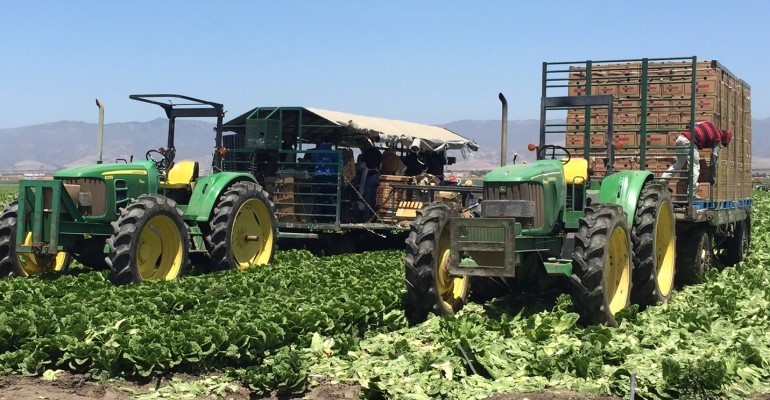Livestock included in leafy greens food safety strategy
New action plan targets activities occurring on nearby or adjacent land, which can influence or contribute to produce contamination.

Recurring outbreaks of Escherichia coli O157:H7 infections tied to consumption of romaine lettuce led the Food & Drug Administration to release a new action plan to identify areas of prevention and response and to address knowledge gaps.
In the area of prevention, FDA said it will be taking further steps to implement the Food Safety Modernization Act's (FSMA) Produce Safety Rule that established science-based minimum standards for the safe growing, harvesting, packing and holding of produce.
FDA said its prevention-focused plans in the leafy greens sector include providing education and technical assistance to industry and other stakeholders, with greater emphasis on the potential impact of adjacent land uses and continued emphasis on the importance of agricultural water quality.
In recent outbreaks associated with romaine lettuce consumption, the microbial contamination of agricultural water was identified as a potential contributing factor. These findings, along with stakeholder input, highlighted the diversity of agricultural production, reinforcing the importance of ensuring that standards are workable across a wide variety of farms, water sources and uses. Further work is needed to advance prevention standards and mitigation strategies, FDA said.
The agency said it hopes to issue proposed revisions to the FSMA agricultural water requirements for covered produce -- other than sprouts -- in 2020.
FDA also said it supports Environmental Protection Agency approval of an FDA-developed protocol that chemical companies may use in obtaining registration of antimicrobial products for use in treating irrigation water.
“Adjacent and nearby land use, particularly land use involving livestock production, has the potential to be a source of pathogens, especially STEC [Shiga toxin-producing E. coli strains] that can contaminate produce,” FDA said. “More focus and work are needed to better understand how to evaluate and mitigate potential hazards.”
As part of its 2020 action, FDA plans to provide education and technical assistance to government partners and industry stakeholders regarding potential impacts of adjacent and nearby land use on produce safety.
In the area of response, FDA will soon be publishing an investigation report on three outbreaks of E. coli O157:H7 infections tied to romaine lettuce and leafy greens between November and December 2019. Each was tied to the Salinas Valley in California. FDA said it will also be conducting follow-up surveillance of fields in that region during this fall’s growing/harvest season.
“While we must act to help prevent and respond to STEC outbreaks with current knowledge, gaps remain in our understanding of how environmental pathogens, including STEC, can contaminate produce,” FDA said. Most leafy greens are grown outdoors, where they are exposed to soil, animals and water, all of which can be a source of contamination.
Developing new science to learn how pathogens survive and move through the environment can help protect these foods that are mostly eaten without cooking or processing to eliminate microbial hazards. FDA is already working with experts in state government, cooperative extension and academia to better understand the ecology of pathogens in the Yuma, Ariz., growing region. Discussions have been initiated to conduct the same research in other growing regions for leafy greens.
The 2020 actions include a call to collaborate with federal and state partners, research organizations and industry stakeholders to identify existing data and knowledge on the impact of adjacent and nearby land use on growing areas for leafy greens, as well as to prioritize collection of additional data and information that will help growers implement effective, science-based mitigation strategies.
FDA also plans to work with government partners and industry stakeholders to explore the feasibility of implementing pre-harvest best management strategies for cattle raised near leafy green growing areas and encourage research into pre-harvest mitigation strategies for cattle.
About the Author(s)
You May Also Like





